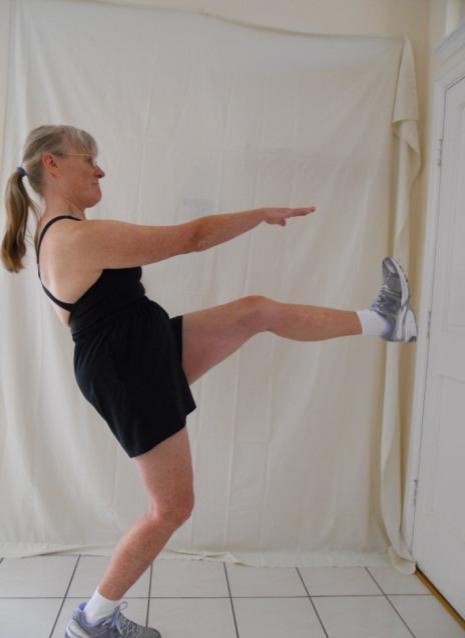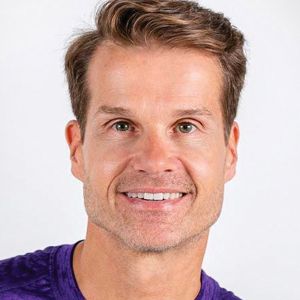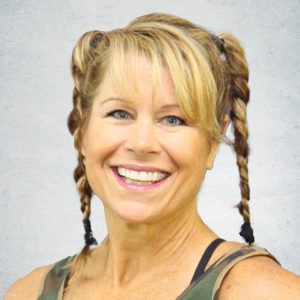
The hand is truly amazing! There are 27 bones in the hand. There are 15 muscles in the forearm that control the movements of the hands and fingers. We can turn the palms down and up, flex and extend the wrist, wave the wrist side to side, flex and extend the fingers, pull the fingers apart and bring them together, circle the thumb, and don’t forget the movement of the opposable thumb. Most of the things that we do with the hands require the strength of several muscles doing various movements simultaneously.
We probably think less often about our feet than we do about our hands, but the foot is amazing too. There are 26 bones in the foot. There are 29 muscles associated with the foot: 10 originate outside the foot but cross the ankle joint to act on the foot, and 19 muscles are inside the foot. All of these muscles work as a team. The ligaments in the ankle, which attach the bones together, contain receptors that give feedback to the brain about where the body is in space. We can dorsiflex the foot (pull the foot up toward the shin) and plantarflex the foot (point the toes). Inversion of the foot means rolling to the outside edge of the foot; eversion means rolling to the inside edge of the foot. We can lift the toes or curl the toes down. One of the most important things our feet do is transmit force both toward and away from the ground in weight bearing activities.
One thing we should do to take care of our hands is to wash them frequently. Plain soap and water washes away the viruses that cause the common cold, flu, COVID, and RSV. Remember to wash for 20 seconds, including between the fingers, the fingernails and the tops of the hands. Using hand cream will help prevent the skin from drying out. Some problems that may cause hand pain include arthritis, carpal tunnel syndrome, ganglion cysts, tendonitis, and trigger finger. For more information on these problems and treatments for them, check out the article on hands from John Hopkins Medicine. The pool is a great place to exercise the hands because the hands are constantly underwater, and therefore resisted. The Arthritis Foundation has a list of exercises for the wrists and fingers:
- Hand and wrist wave – elbows are near the waist with the thumbs up, wave the hands side to side
- Wrist stretch – the arms are near the surface of the water with palms together, then bring the hands toward the chest with fingertips pointing up.
- Wrist rotation – circle the wrists
- Finger curl – make a fist and extend the fingers
- Cat’s claw – bend the fingers at the middle joint to simulate a cat’s claw
- Piano – bend and straighten the fingers as if playing a piano
- Finger flicks
- Finger O – touch the thumb to the tip of each finger
- Finger walk – slide one finger at a time toward the thumb
- Finger spread – spread the fingers apart and move them back together
- Finger lift – rest the palms on the thighs and lift the thumbs and then the fingers one at a time
- Thumb bend – touch the thumb to the base of each finger
- Thumb circles
You can also shake out the hands to release tension and help relax the muscles of the hands. Even though these exercises come from the Arthritis Foundation, they are beneficial to include in any water fitness class.
Some problems that may cause foot and ankle pain include heel spurs, corns, bunions, hammertoes, ankle sprains, fractures, planar fasciitis, Achilles tendon injuries and diabetes. For more information on these problems and treatments for them check out the article on feet from John Hopkins Medicine. Some exercises to do in the pool for the ankles and feet from the Arthritis Foundation are:
- Point and flex the foot
- Heel-toe lift – rock back on your heels then rise onto the toes
- Ankle circles – or write your name with your foot
- Ankle in/ankle out – roll the foot in to tap the big toe on the floor then roll it out to tap the little toe on the floor
- Toe curl – lift the toes off the floor then curl the toes as if picking up a pencil
You can also walk on your toes and on your heels. Put one foot on the toes of the opposite foot and try to lift the the toes of the bottom foot.

In addition to doing exercises for the hands and feet, there are some cautions for your water fitness class. Grip strength is important, but you want to be sure to relax the grip between sets with foam dumbbells. It’s a good idea to stretch the fingers or wiggle them or do one of the hand exercises above before beginning another set. Holding the dumbbells with the wrists extended can aggravate carpal tunnel syndrome. Be sure to keep the wrists in neutral, which avoids excessive strain and fatigue in the hands and wrists. To protect the feet, avoid excessive rebounding. When you tell your class to start jogging, they will automatically rebound. If you do not vary the impact forces, your class could easily rebound for 50 minutes. Include exercises in the neutral position with the hips and knees bent and the shoulders below the surface of the water (Level II), suspended exercises (Level III) and grounded exercises keeping one foot on the pool floor. When you do rebound, teach how to land. Landing toe-ball-heel will diffuse the shock. When landing toe-ball-heel, the heel barely makes contact with the pool floor before lifting off again, so do not cue to keep the heels down. Avoid repetitive impact on the ball of the foot because the metatarsal fat pad on the bottom of the foot frequently degenerates in women over 50. Offer modifications to jumping and rebounding for those who have plantar fasciitis. Aqua shoes are recommended because they can help protect the feet. Deep water exercise is best for anyone recovering from an ankle sprain.
Resource: Pauline Ivens, MS and Catherine Holder, PT, Do No Harm, 2011
You use both your hands and your feet constantly, so take good care of them. See you in the pool!
























